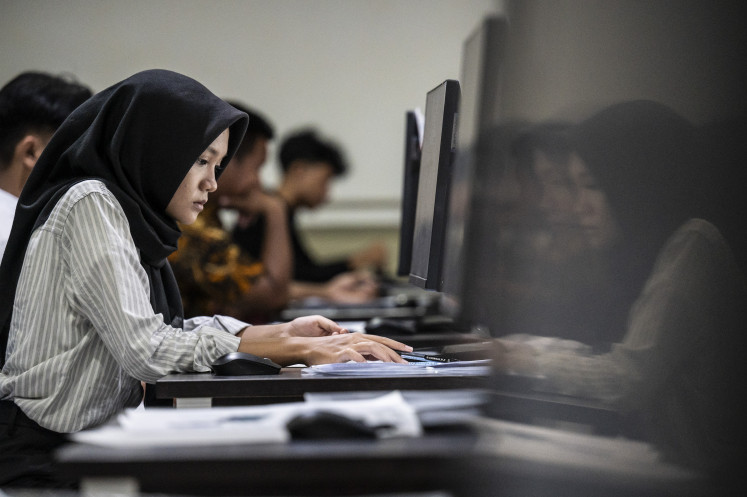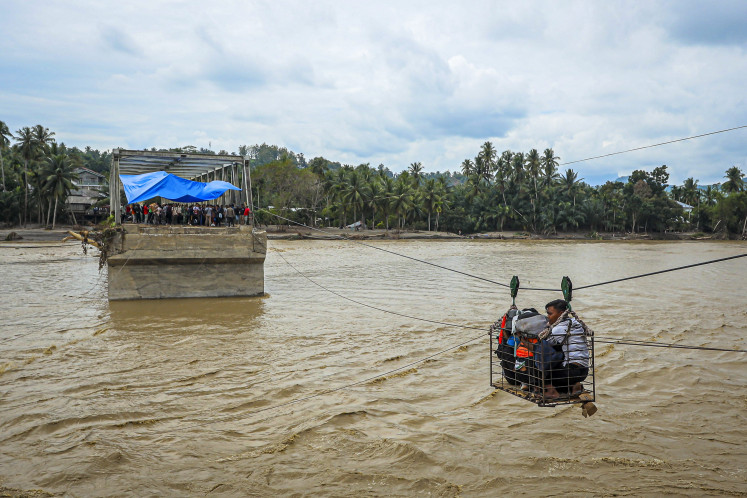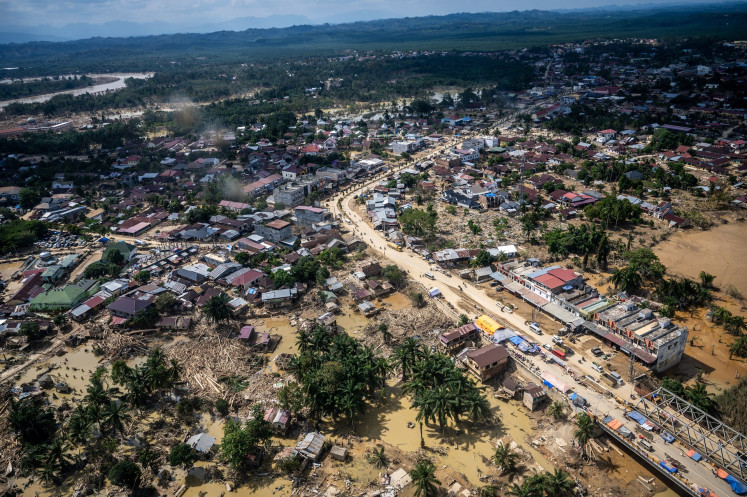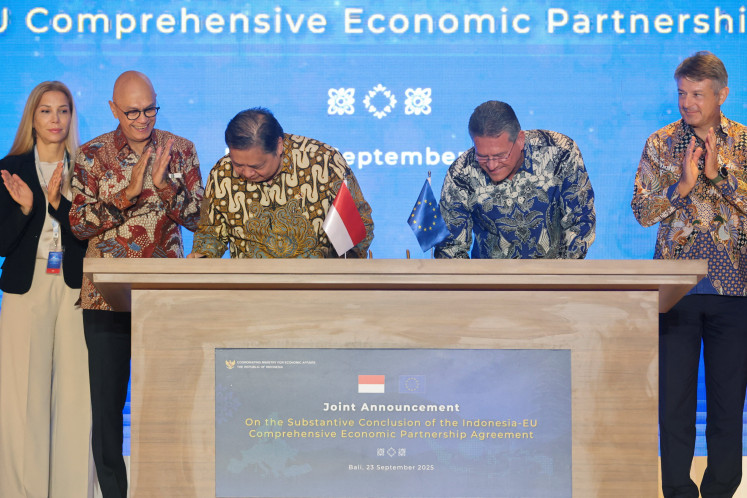Popular Reads
Top Results
Can't find what you're looking for?
View all search resultsPopular Reads
Top Results
Can't find what you're looking for?
View all search resultsIndia’s response to stimulate economy in the face of pandemic
Through building capacities at home, India also intends to contribute to mitigating disruptions in global markets.
Change text size
Gift Premium Articles
to Anyone
T
he COVID-19 pandemic has put the entire world in a spin and undesirable imposition on all of us. Every government suddenly finds itself in uncharted waters and faced with newer and stranger realities.
Across the globe, several governments have fashioned their policy responses, keeping in view their population profile and unique challenges, to invigorate their economies in the face of the pandemic. For instance, Indonesia has adopted a number of measures targeted at the deprived sections by allocating US$2 billion for poverty alleviation, relaxation of import and export regulations and benefits extended to low income groups in housing sector.
Keeping in mind its unique challenges, India, too, has recalibrated its policy approach to deal with social and economic obstacles that the pandemic has posed. India is a big country with a huge and dense population spread across several diverse regions. The pandemic has posed a host of challenges to India, which are health-related as well as economic and social in nature.
Recently, the government of India promulgated the Atmanirbhar Bharat Abhiyaan (self-reliant India), the objective of which is to merge domestic production and consumption with global supply chains. It is also about being self-sustaining and self-generating, without being isolationist.
By its idea of self-reliance or Atmanirbhar, India does not seek self-centered arrangements or turning the country inward. The call for Atmanirbhar is not about reverting to economic isolationism. Its essential aim is to ensure India’s position as a key participant in global supply chains.
Through building capacities at home, India also intends to contribute to mitigating disruptions in global markets. India seeks to identify products and commodities where it has the ability or potential to expand domestic production and enhance global availability. As such there is no contradiction between an India that is building its economic capacities, and an India that is looking to play a bigger role in global business, trade and innovation.
The $300 billion stimulus scheme is directly aimed at empowering vulnerable sections of Indian society to ensure inclusive social protection and growth. The vision of Atmanirbhar Bharat, as the prime minister said, would stand on the five pillars of: economy; infrastructure; India’s system driven by technology; demography and demand.
The stimulus package of nearly $270 billion launched by the prime minister under the Abhiyaan aims to both reinvigorate the economy and provide a social safety net to our vulnerable sections. The program also endeavors to mitigate the socioeconomic impact of the pandemic in the short term, but also to instill confidence in Indian businesses and industries, make Indian manufacturing globally competitive; integrating Indian agriculture and small farmers with global food supply chains and embracing both investment and technology.
The size of the economic relief and stimuli measures under the Abhiyaan is equivalent to 10 percent of India’s gross domestic product (GDP). Structural reforms and relief measures under the Abhiyaan cover every section of the Indian economy, including small farmers, migrant workers and laborers, agriculture, the micro, small and medium enterprises (MSME) sector, small businesses, start-ups, housing, industrial infrastructure, healthcare, and education, among others.
Under this pro-poor package, so far the government has already transferred an amount equivalent to $4.2 billion to 200 million families and $2.4 billion to 90 million farmers – all the money directly transferred into individual bank accounts. It has further allocated $6.7 billion for creating job opportunities.
Indian private sector participation has been given a big push in eight areas, including coal, minerals, defense production, civil aviation, power distribution, social infrastructure, space and atomic energy. The New Public Sector Enterprise policy will be a significant step in enabling private participation in a greater number of sectors. These are just a few examples of opening previously restricted sectors to private participation. Access to affordable capital has been made easier by GOI for small businesses, which are important economic engines and job creators.
On the monetary front, the Reserve Bank of India, the country’s central bank, has slashed policy rates, eased asset quality norms, provided loan moratoriums, taken measures to support exporters and allowed states to borrow more to meet their financing requirements. It has also pumped in massive liquidity to support banks, non-banking financial companies, mutual funds as well as taken measures to push the flow of funds to the MSMEs and the corporate sector.
Another innovative initiative of the government of India is the Skill Mapping of Returning Indians (SWADES), which helps returning Indians from overseas and facing job uncertainties to match their skills with available jobs. This also addresses the problem of bridging the demand-supply gap in Indian industry.
While dealing with the economic and social fallout of the pandemic, at the same time, the Indian government has been very mindful of augmenting its health sector spending programs. It has committed $3 billion to expand hospital facilities, ramp up test-track-treatment capacity and extended insurance coverage to frontline health workers engaged in COVID-19 response.
There is a widespread feeling that this pandemic can be brought to rest only through a medical breakthrough in the form of a vaccine. Along with several other prominent global pharma countries, India is leading world efforts in its search for a vaccine.
Two Indian companies are working on a vaccine and have secured government approval for clinical human trials. India remains strongly committed to this and was among the first countries to recognize the need for global engagement in handling the COVID-19 crisis.
India took the lead in engaging world leaders for evolving a coordinated response. At the recently held virtual Global Vaccine Summit, India pledged $15 million to GAVI, the International Vaccine Alliance. Prime Minister Modi also highlighted that during the pandemic India had tried to live up to the teaching of seeing the world as one family, Vasudhaiv Kutumbkam, by sharing medicines with all countries and by provide specific support to countries that sought it.
Besides individual governmental domestic stimulus and welfare measures, global engagement and cooperation have become quite critical to deal with the pandemic and ensure economic recovery across the globe. It is imperative now that countries need to pool their collective efforts and resources to develop vaccines and therapeutic treatments to contain the virus, while working together to ensure that the economic fallout of the pandemic is mitigated.
***
The writer is consul general of India to Sumatra









